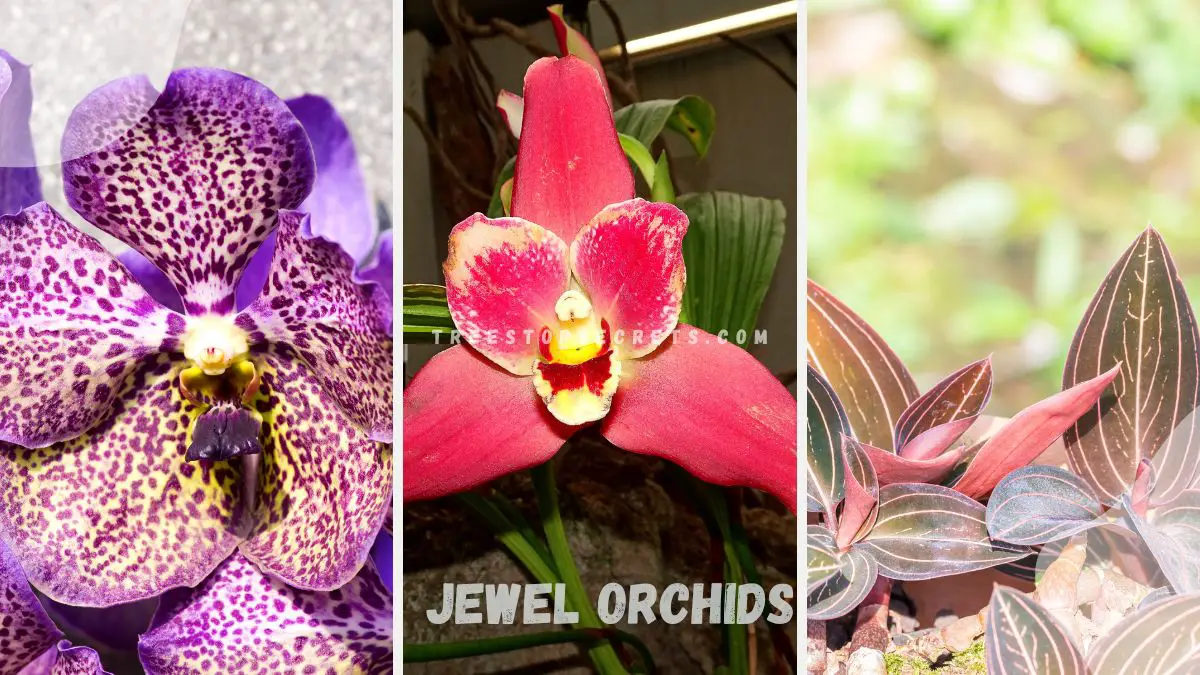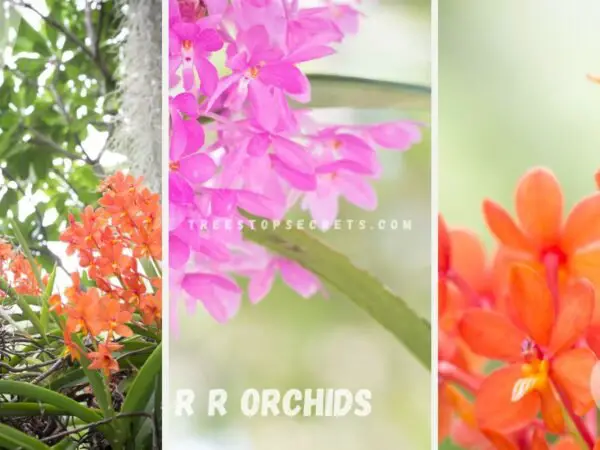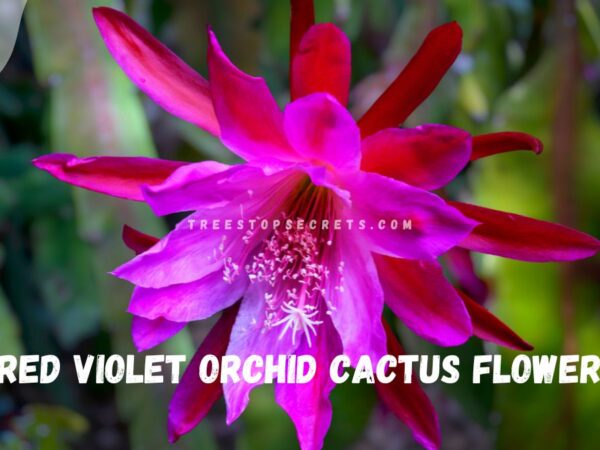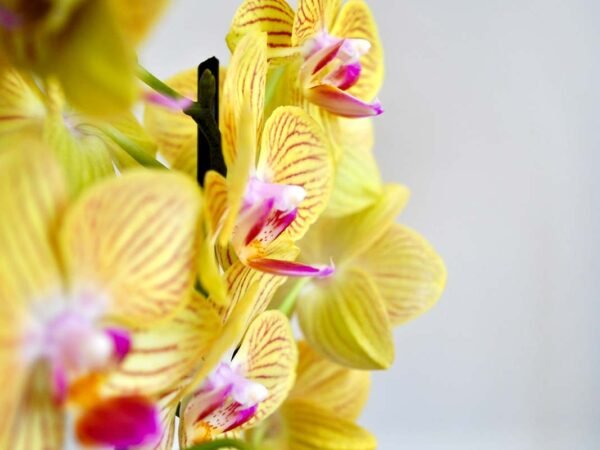Jewel Orchids, renowned for their stunning foliage rather than their flowers, are ideal for indoor plant enthusiasts seeking a low-light, easy-to-care-for option. With their intricate leaf patterns and velvety texture, they bring a touch of elegance to any space. Whether you’re new to indoor gardening or a seasoned pro, these orchids offer beauty and simplicity in care, making them a great choice for enhancing your indoor garden.
Jewel Orchids are distinctive from other orchids primarily due to their leaves. Unlike traditional orchids known for their vibrant flowers, Jewel Orchids such as Ludisia discolor, Macodes petola, and Anoectochilus formosanus are prized for their unique, intricately veined foliage. These orchids thrive in low-light conditions and require moderate watering, making them suitable for indoor environments. Their leaves typically exhibit a range of colors, from dark green to reddish hues, with striking vein patterns that can shimmer under light. Here’s a brief comparison:
| Feature | Jewel Orchids | Traditional Orchids |
|---|---|---|
| Main Attraction | Leaves | Flowers |
| Light Requirement | Low to moderate | Bright, indirect |
| Watering Needs | Moderate, likes humidity | Varies, often less frequent |
| Example Species | Ludisia discolor, Macodes petola | Phalaenopsis, Cattleya |
Interested in enhancing your indoor garden with Jewel Orchids? Explore more about their care and discover how they can bring an extraordinary touch of nature into your home.
Key Takeaways
- Understand the specific needs of jewel orchids to ensure their optimal growth and health.
- Create ideal growing conditions by providing adequate light, humidity, and temperature levels for your jewel orchids.
- Regular maintenance tasks like watering, fertilizing, and repotting are essential for the well-being of your jewel orchids.
- Monitor the health of your jewel orchids closely to address any issues promptly and promote blooming.
- Consider the aesthetic appeal of jewel orchids in your indoor space and explore different varieties for visual interest.
- Troubleshoot common problems such as pests, diseases, or improper care to maintain the vitality of your jewel orchids.
Understanding Jewel Orchids
Care Essentials
When caring for jewel orchids, ensure they have well-drained soil to prevent waterlogging and root rot. Maintain moderate humidity levels to support healthy growth. Use room-temperature water for watering sessions to avoid shocking the plants.
Light Requirements
Jewel orchids thrive in medium to low indirect light, avoiding direct sunlight exposure that can harm their delicate leaves. Ensure there is sufficient brightness for optimal growth without causing sunburn or leaf damage.
Ideal Soil
For planting jewel orchids, choose a loamy, well-drained potting mix that promotes healthy root development. Opt for a mix containing peat moss and perlite to provide essential nutrients and moisture retention. Add extra perlite to enhance drainage and prevent water stagnation.
Watering Tips
To maintain the health of jewel orchids, water them when the top layer of soil dries out to prevent overwatering. Keep the soil consistently moist but not waterlogged to avoid root suffocation and fungal diseases. Use room-temperature water during watering sessions to prevent temperature shock.
Optimizing Growing Conditions
Temperature and Humidity
Maintain temperatures between 60-80 degrees to support winter growth effectively. Orchid growers should ensure humidity levels of 50-70% for the jewel orchids' healthy development. These plants can tolerate summer temperatures ranging from 90 to 95 degrees, providing a broad range of adaptability.
Choosing Fertilizer
Orchid growers should feed jewel orchids with orchid-specific fertilizer every two months to promote robust growth. It's essential to apply fertilizer after watering to prevent root burn, ensuring the plant's overall health and vitality. To maximize nutrient absorption, spray the fertilizer on both the foliage and soil, allowing for optimal uptake.
Types and Varieties
For enthusiasts exploring different types of jewel orchids, 'Alba' is a popular choice characterized by silvery-white veins on vibrant green leaves. Another intriguing variety is 'Nigrescens,' known for its striking silver vein against dark leaves, adding a unique touch to any collection. Red Velvet' is another captivating option with vivid red veins contrasting beautifully against dark foliage, showcasing nature's diverse beauty.
Maintenance and Propagation
Pruning Techniques
Trim dead or damaged leaves to keep your jewel orchids healthy. This helps the plant focus its energy on new growth. By maintaining the desired shape and size through pruning, you can promote a more compact and aesthetically pleasing appearance. Regularly inspect your plant for any signs of damage or overgrowth, and prune as necessary to ensure its overall health and vitality.
Propagation Steps
To propagate jewel orchids, opt for the division method. Begin by separating healthy sections of the plant that have their own roots. This process involves carefully dividing the plant into smaller sections, each with sufficient root structure to support growth. By following proper techniques, such as ensuring each divided section has enough roots to sustain itself, you can increase your chances of successful propagation.
Health and Bloom
Pests and Diseases
Jewel orchids are susceptible to spider mites and mealybugs, so keep an eye out for these common pests. To prevent fungal diseases, avoid overwatering your plants. If pests appear, address them promptly using suitable methods.
Encouraging Blooms
To encourage blooming in jewel orchids, provide optimal growing conditions such as proper light and humidity levels. Follow a consistent care routine to promote healthy flowering. Creating a nurturing environment is key to seeing vibrant blooms.
Bloom Months
Different varieties of jewel orchids bloom in specific months, adding color and beauty to your space. Enjoy the sight of delicate flowers during the flowering season, which varies depending on the type of orchid. Take note of the timing to anticipate and appreciate their blooms.
Aesthetic Aspects
Flower Characteristics
Jewel orchid flowers display unique features that set them apart from other plants. Their blooms come in a variety of colors, ranging from deep purples to vibrant greens. The shapes of these flowers can be intricate, with some resembling stars or hearts. Different varieties of jewel orchids also emit fragrances that range from sweet and floral to earthy and musky.
When deadheading jewel orchid flowers, it is important to remove spent blooms promptly. This process helps the plant channel its energy into producing new growth and additional flowers. Regularly deadheading the flowers also ensures that the plant maintains a tidy and attractive appearance. After the blooming period of the orchid, it is advisable to prune the flower stalks carefully to encourage healthy growth in the next blooming season.
Troubleshooting Common Issues
Yellow Leaves
Yellow leaves on jewel orchids indicate potential problems that need immediate attention. Addressing yellowing leaves promptly can prevent further issues from arising. Check for signs of overwatering, which can lead to root rot and yellow leaves. Nutrient deficiencies may also cause yellowing, particularly nitrogen or iron deficiency. Adjust your care practices by reducing watering frequency and ensuring proper fertilization to revive the yellow leaves.
Browning Tips
When dealing with browning tips on your jewel orchids, it's essential to identify the root causes promptly. Adjust the watering schedule to ensure that the plant is not receiving too much water, leading to soggy soil and root issues. Inadequate light exposure can also contribute to browning tips, so consider moving your orchid to a spot with more suitable lighting conditions. If you notice browning tips on the leaves, trim the affected areas carefully to maintain overall plant health and appearance.
Closing Thoughts
You've now gained a comprehensive understanding of jewel orchids, from their care requirements to troubleshooting common issues. By optimizing growing conditions and mastering maintenance techniques, you can ensure your jewel orchids thrive. Remember to provide adequate light, humidity, and proper watering to support healthy growth and vibrant blooms. Regularly inspect your plants for signs of pests or diseases and take prompt action to maintain their well-being.
Incorporate the insights shared in this guide to create a nurturing environment for your jewel orchids. Share your newfound knowledge with fellow plant enthusiasts, and continue exploring the fascinating world of orchids. Your dedication and care will be rewarded with the stunning beauty of these unique plants.
Frequently Asked Questions
What are Jewel Orchids?
Jewel orchids are a unique group of orchid plants known for their stunning foliage rather than their flowers. They feature vibrant patterns and colors on their leaves, making them popular among plant enthusiasts looking to add a touch of elegance to their indoor spaces.
How do I optimize growing conditions for Jewel Orchids?
- Provide indirect light
- Maintain high humidity levels
- Use well-draining soil mix
- Keep temperatures between 65-75°F
- Fertilize lightly during the growing season
- Repot when necessary to refresh the soil and provide space for growth
How can I maintain and propagate Jewel Orchids?
- Regularly check for pests and diseases
- Water when the top inch of soil is dry
- Propagate through division or stem cuttings
- Ensure adequate air circulation around the plants
- Prune dead or yellowing leaves to encourage new growth
What should I do to ensure the health and bloom of my Jewel Orchids?
- Monitor moisture levels to prevent root rot
- Provide proper air circulation to prevent fungal issues
- Avoid over-fertilizing, which can damage roots
- Allow for a rest period after blooming to promote new growth
- Use a balanced fertilizer with higher phosphorus content for blooming
How can I enhance the aesthetic aspects of my Jewel Orchids?
- Choose decorative pots that complement the foliage colors
- Display them in well-lit areas to showcase their beauty
- Group different varieties together for a visually appealing arrangement
- Rotate the plants occasionally for even growth and exposure to light
- Consider using humidity trays or misting to create a lush environment
What are common issues faced when growing Jewel Orchids?
- Root Rot: Caused by overwatering or poor drainage.
- Pests: Watch out for spider mites, mealybugs, and aphids.
- Leaf Spot: Fungal disease due to excessive moisture.
- Yellowing Leaves: Could indicate nutrient deficiencies or improper light levels.
- Bud Blast: Flower buds drying up before blooming due to sudden changes in environment.
Image Source: Paid image from CANVA





